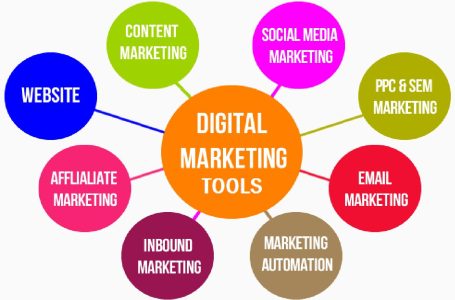Marketing is essential, not only because you believe so. Choosing a powerful and successful client acquisition channel might be scary in this competitive era in which every company is fighting to get their message out. Trying to find out how to construct the approach can keep anyone awake at night. Which one would you select if you had to decide between digital marketing and advertising?
Indeed, advertising and marketing are inextricably linked in a variety of ways. In reality, many marketers use the terms interchangeably. Experts in the field use the phrases interchangeably and boldly.
Several of the vexing problems to address are:
- Is there a distinction between these two terms?
- Is there a distinction between digital marketing and digital advertising? If so, how much so?
- Should I get a digital advertising strategy or a digital marketing strategy for my company?
- Should I hire a digital marketing firm or a digital advertising agency to help my company grow?
Let’s dive into the details.
Defining Digital Advertising
According to Wikipedia, digital advertising is a type of marketing and advertising in which messages are conveyed to the intended audience over the internet. Online advertising, internet marketing, web advertising, and other terms are also used to describe digital advertising. Chron describes digital advertising as a type of marketing material that is exhibited digitally. The balance provides a much simpler definition—an ad on the internet is known as digital advertising.
Marc Slutsky of Smart Marketing explains digital advertising as the use of media within a certain time period to promote a service, product, or event. As a result, digital advertising is just an advertisement on the internet. Ads that appear in search results are another sort of digital advertising. Therefore, when you run ads online, you are engaged in online advertising.
Three major categories make up digital advertising. These are pay per click search ads, display, and social ads. The first kind refers to Bing ads, AdWords search ads, and Search7 ads; it is also commonly known as PPC. The second kind refers to videos, banners, static, mobile, pop-up, and similar ads. The last one, social advertisements, are ones you see on social media platforms like Twitter, Instagram, Facebook, YouTube, and more. We’ve all seen suggested posts on Facebook, and sometimes we wonder, “Why am I seeing this?” That, ladies and gentlemen, is the ideal example of a social ad.
Defining Digital Marketing
Wikipedia characterizes digital marketing as a catch-all word for marketing that makes use of digital technology. It is defined by Business Dictionary as the advertising of products/services using any type of electronic media. Dave Chaffey described digital marketing as attaining marketing objectives via the use of digital technology and media. Hubspot, on the other hand, says that it is any type of internet marketing.
To keep it short, it is promotion done using the internet or digital technology. To truly comprehend digital marketing, it is essential to first comprehend what marketing is. The American Marketing Association defines marketing as the activity, collection of institutions, and procedures for developing, expressing, distributing, and exchanging value-added services for consumers, clients, partners, and society.
Putting it simply, it is the process of placing a product in the right place, price, and time. And, when you end up doing all this on the internet, it is referred to as digital marketing. Let’s get back to Chaffey’s definition one more time. He defines it as managing various types of online firm presence such as the social media accounts like Facebook, Instagram, Youtube, Twitter, mobile app, website, and so on.
According to HubSpot, it includes a variety of assets and methods ranging from a company’s website to branding. All this entails email marketing, digital advertising, blog posts, logos, infographics, white papers, tools, and anything else that can aid with online promotion.
It is classified into six types: online PR, online advertising, social media marketing, content marketing, search engine optimization, and email marketing. Essentially, It is a bigger concept, and digital advertising is only one aspect of it.
Which One Do You Need More: Digital Marketing or Advertising
Is digital advertising crucial for your company? Short answer: no. Long answer: your internet business may survive in the absence of digital advertising. Why? Because it is only one method of promoting your items on the internet. It’s acceptable to utilize any other channel to generate leads and consumers as long as you’re getting results.
As outlined by emarkable, your organization needs digital advertising to drive traffic, which is the third phase of the digital marketing process. You can create traffic from any other source, such as Google, Yahoo, Facebook, Twitter, website content marketing, email marketing, press releases, and more. Digital advertising is only one component of your marketing strategy. It is required during the promotion stage to tell your core demographic about your products and services.
Even though digital marketing is one alternative, it is not required to employ this kind of advertising during the promotion stage in order to reach your target demographic. As you can see, you can run a thriving business without the help of digital advertising.
Is it essential for your company? Definitely. You can’t run a business if you don’t use it. Even better, if you want to break through the clutter and eventually attract devoted clients to your company, you must promote online.
It specifies your marketing approach, how you’ll identify your target demographic, and how you’ll acquire, convert, and retain consumers for your company. A digital marketer’s head is filled with a plethora of diverse thoughts.






One Comment
[…] The advantage of native advertising is that rather than bombarding clients with advertisements, you create customer confidence and look real and true. This strategy may also be used to launch a new product or to correct a public image. Disadvantages include taking a lot of time and effort to create native adverts. It may also provide a low return on investment when compared to other forms of digital advertising. […]